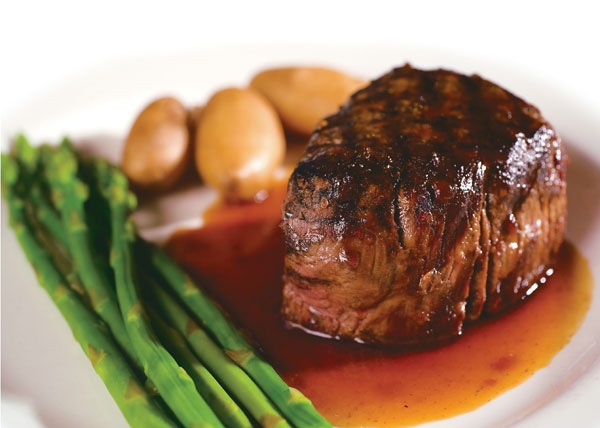Smartphones And Steaks: MSU Research Working To Change The Concept Of “Know Your Food”
Thanks to a new pilot program being conducted at Michigan State University (MSU), the day may soon be approaching where a quick barcode scan with your smartphone could tell you the exact animal and farm where your steak originated.
May 16, 2011

Unless you purchased your steak from the farmer down the road, it can be hard to tell exactly where it came from, even if the sticker on the package says local. Thanks to a new pilot program being conducted at Michigan State University (MSU), though, the day may soon be approaching where a quick barcode scan with your smartphone could tell you the exact animal and farm where your steak originated.
In 2007, Michigan adopted a mandatory livestock tracing program – the only one of its kind in the country – requiring that all cattle have a radio frequency identification (RFID) ear tag before leaving their original farm. The tags are designed to track the movement of Michigan’s cattle herd and provide animal health officials with a tool to trace an individual animal back to where it was born. Now that the mandatory tracking system has been in place for four years, MSU researchers want to continue improving the system by continuing the traceability of information beyond just the processor.
“We want to be able to trace individual animals from the farm to the plate,” said MSU animal science associate professor Dan Buskirk. “By translating RFID ear tags to a barcode, pieces or packages of beef can be labeled with that code, tracing it back to the farm and the individual animal.”
Buskirk, who has been working with the Michigan RFID program since its inception, was looking for a way to expand its value when fellow animal science assistant professor Jason Rowntree began working on a new project to utilize MSU-raised beef cattle in MSU restaurants and cafeterias. It quickly became clear that MSU Culinary Services, a department of MSU Residential and Hospitality Services, a partner in the project that oversees the food products used throughout campus, was interested in not only locally sourced beef, but also the potential for full traceability of beef from the farm to the plate.
“There is not currently a commonly accepted definition for the word ‘local,’ so when something is labeled and marketed as ‘local,’ one can’t be sure what ‘local’ means. It could mean a certain number of miles from a given store or could indicate it originated elsewhere in the state or even in a multi-state area,” he added. “What we’re trying to do is to be able to not only say it’s ‘local,’ but to prove it’s local.”
The pilot for the local beef project will also serve as the pilot program for Buskirk and his team to begin putting the pieces in place to track beef all the way to the consumer. He is working with small- and medium-sized food processors to perfect the technology and identify any challenges for implementing it. Coordinating the barcode with the multitude of products that can come from a single animal appears to be one of the biggest hurdles they face.
“Besides just tracking a single animal from birth to harvest, there can be up to 500 packages of meat in a single beef carcass, so trying to track that volume has a whole different set of issues,” Buskirk explained. “That’s what this pilot project is going to help us do – refine the technology and refine the methods we use to be able to track beef through the entire system.”
The researchers hope consumers will be able to scan the barcode at a kiosk in the grocery store or by using a smartphone application (app). The code would then link the consumer to information about the farm of origin, its management practices and similar types of information.
“I think the consumer benefits because they currently look at a package that says local and they don’t know what that really means. How local is it? Where did it really come from?” Buskirk asked. “With what we’re doing, they can see exactly where the beef came from, exactly what farming practices were used on the farm, and maybe even see a picture of that farm and some of the things that are currently happening there.”
And consumers won’t be the only ones benefiting.
“Smaller (livestock) producers have done a lot of good things in terms of beef quality assurance, developing and adopting cutting-edge production methods and observing really good solid management practices, but they don’t have a good way, necessarily, to let consumers know about this unless they’re marketing beef directly to a consumer as freezer beef or marketing it at a local farmers market,” Buskirk said.
“When farmers don’t deal directly one-on-one with the consumer, they really lose touch with the consumer and can’t pass this type of information on,” he added. “Even though farmers still wouldn’t have personal contact with consumers, the traceability method we propose would give them a chance to share this information and allow consumers an opportunity to know exactly what farming practices were used and how the animal was raised. That has not been traditionally possible, at this scale, in the past.”
You May Also Like
.png?width=300&auto=webp&quality=80&disable=upscale)


